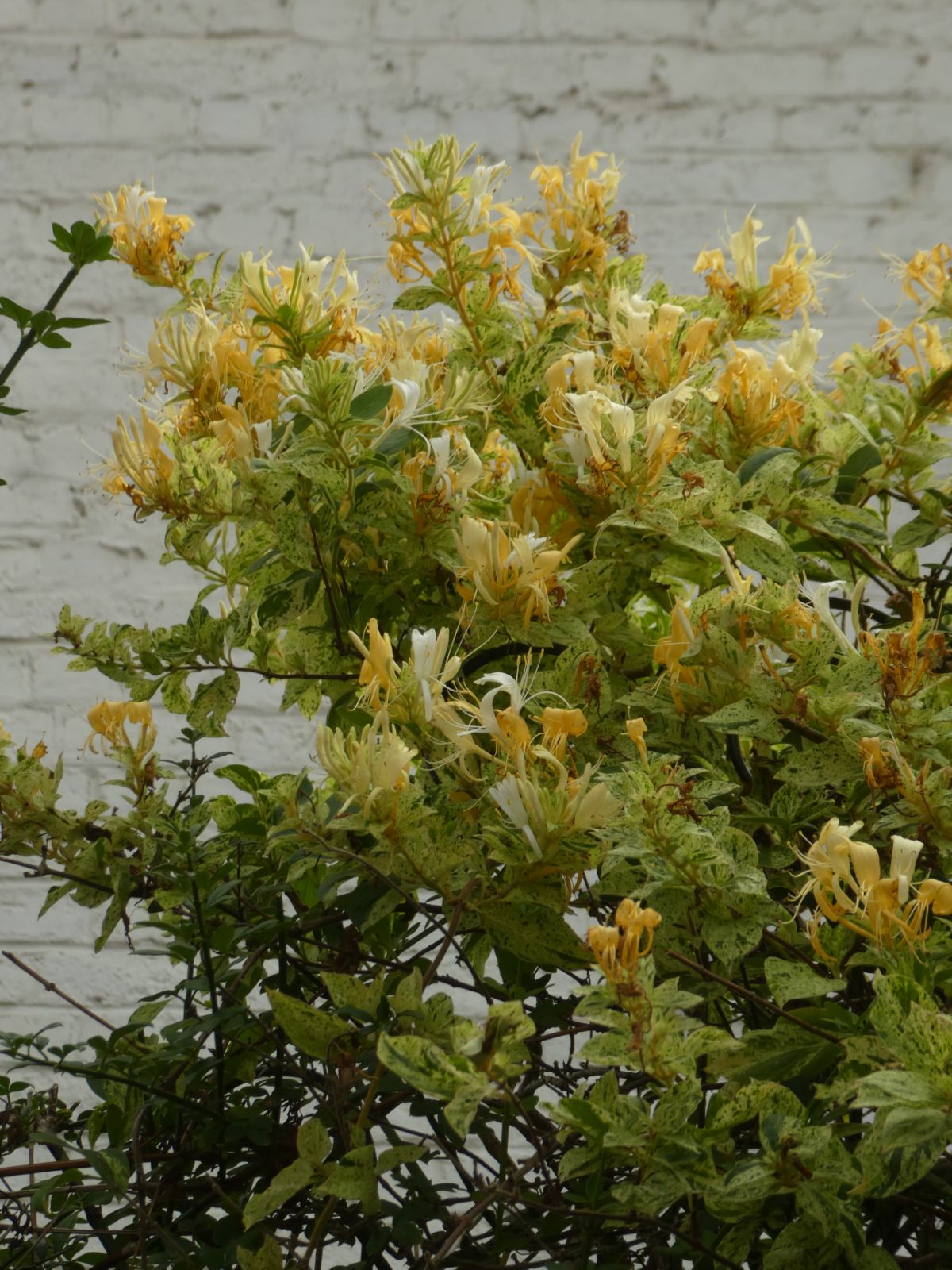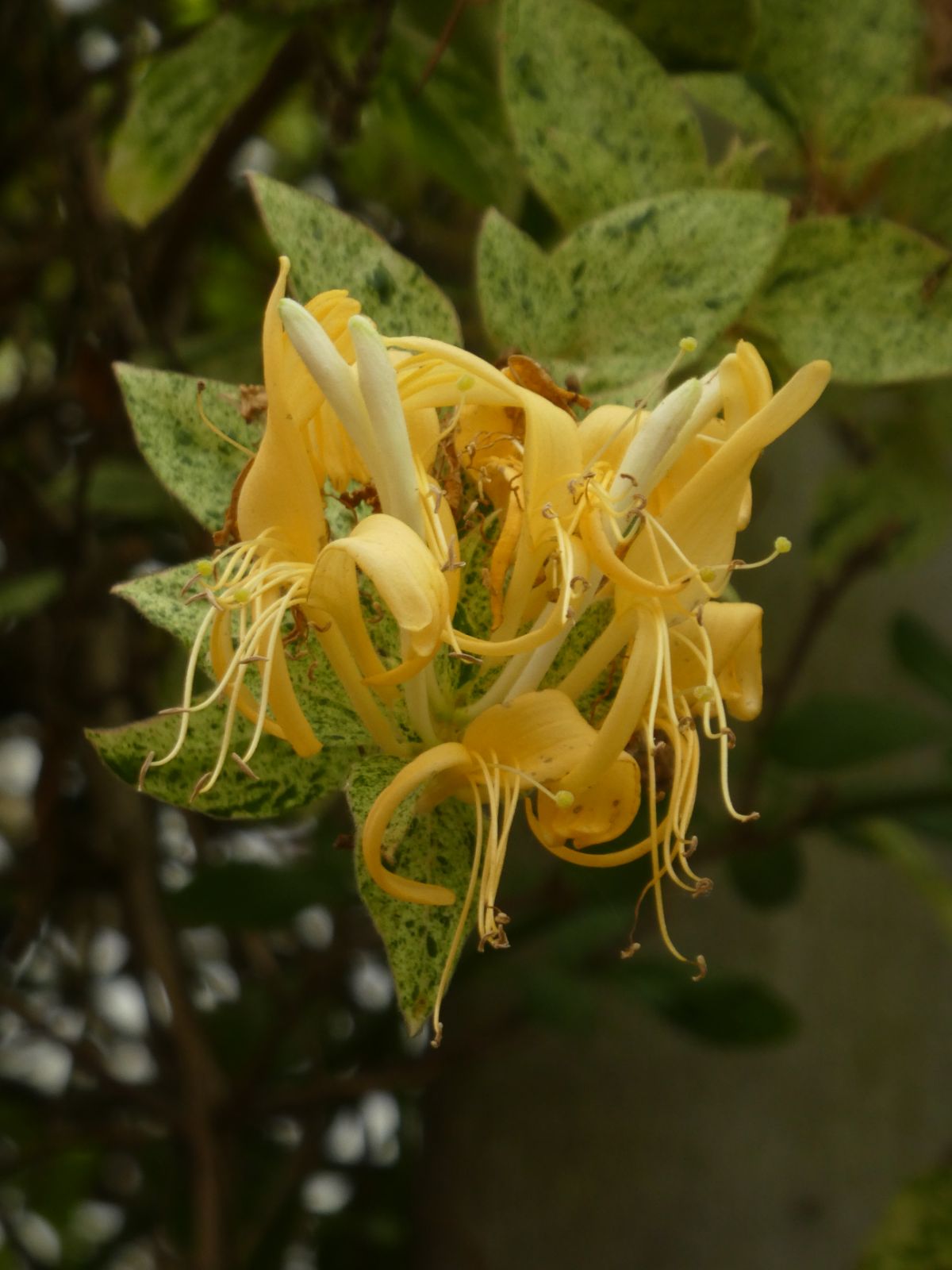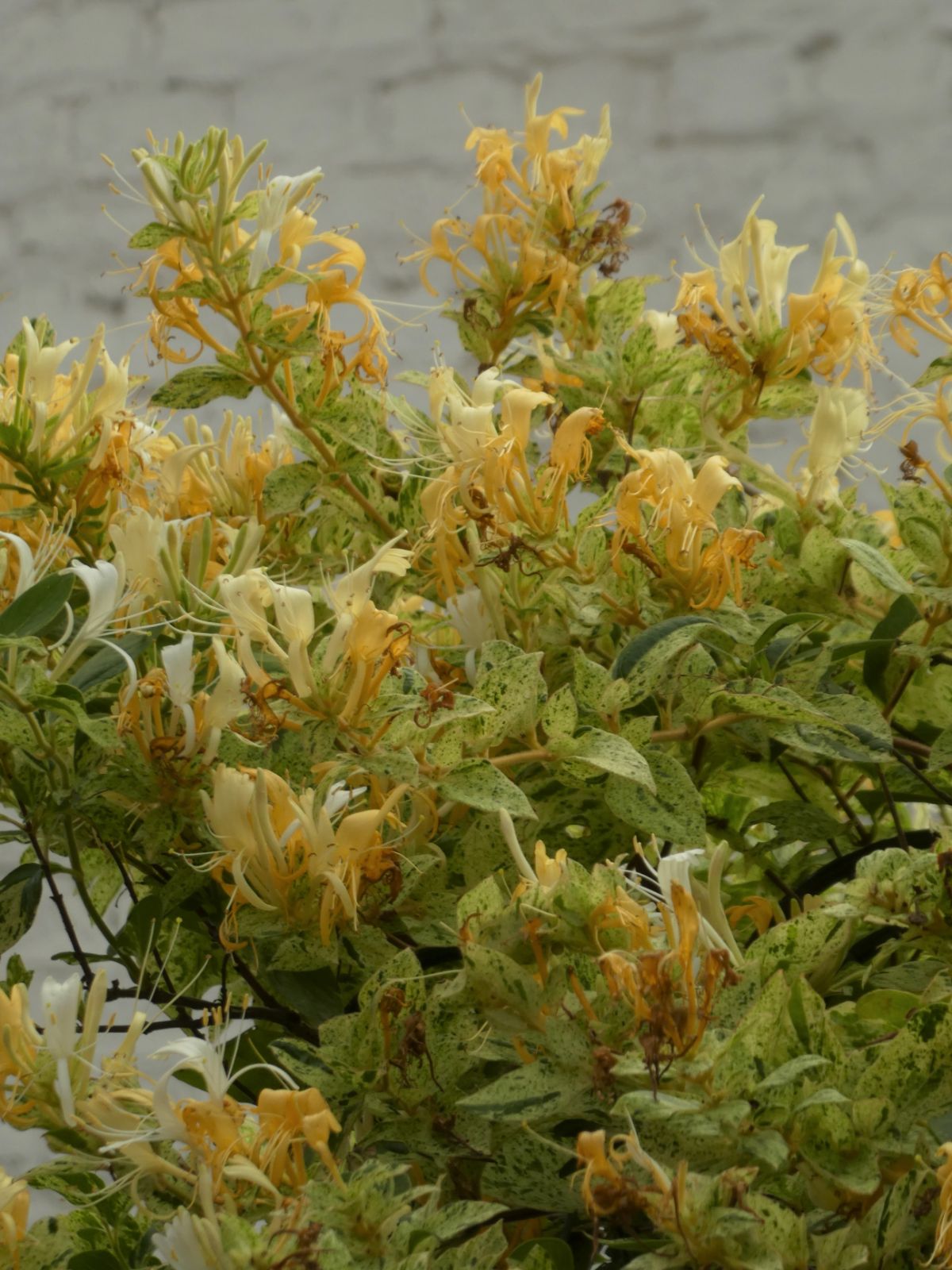Lonicera japonica
Credits
Article from Bean's Trees and Shrubs Hardy in the British Isles
Recommended citation
'Lonicera japonica' from the website Trees and Shrubs Online (treesandshrubsonline.
Genus
Synonyms
- Nintooa japonica (Thunb.) Sweet
Infraspecifics
Other taxa in genus
- Lonicera albertii
- Lonicera alpigena
- Lonicera alseuosmoides
- Lonicera altmannii
- Lonicera × americana
- Lonicera angustifolia
- Lonicera × brownii
- Lonicera caerulea
- Lonicera caprifolium
- Lonicera caucasica
- Lonicera chaetocarpa
- Lonicera chrysantha
- Lonicera ciliosa
- Lonicera deflexicalyx
- Lonicera dioica
- Lonicera etrusca
- Lonicera ferdinandii
- Lonicera flava
- Lonicera fragrantissima
- Lonicera giraldii
- Lonicera griffithii
- Lonicera gynochlamydea
- Lonicera × heckrottii
- Lonicera henryi
- Lonicera hildebrandiana
- Lonicera hirsuta
- Lonicera hispida
- Lonicera iberica
- Lonicera implexa
- Lonicera korolkowii
- Lonicera ledebourii
- Lonicera maackii
- Lonicera maximowiczii
- Lonicera microphylla
- Lonicera morrowii
- Lonicera myrtillus
- Lonicera nervosa
- Lonicera nigra
- Lonicera nitida
- Lonicera periclymenum
- Lonicera pileata
- Lonicera prolifera
- Lonicera prostrata
- Lonicera purpurascens
- Lonicera × purpusii
- Lonicera pyrenaica
- Lonicera quinquelocularis
- Lonicera rupicola
- Lonicera ruprechtiana
- Lonicera sempervirens
- Lonicera setifera
- Lonicera similis
- Lonicera splendida
- Lonicera standishii
- Lonicera syringantha
- Lonicera tangutica
- Lonicera tatarica
- Lonicera tatsienensis
- Lonicera × tellmanniana
- Lonicera thibetica
- Lonicera tomentella
- Lonicera tragophylla
- Lonicera trichosantha
- Lonicera xylosteum
- Lonicera yunnanensis
An evergreen climber of vigorous habit, growing 20 to 30 ft high; stems hollow, twining, densely covered with spreading hairs when young, green or reddish purple. Leaves variable in shape, from elliptic to broad elliptic or ovate, rounded or truncate or cuneate at the base, apex acute or sometimes rounded and then narrowed abruptly to an acuminate tip, 11⁄4 to 31⁄4 in. long, margins ciliate, the blade varying in indumentum from downy or villous above and villous beneath (especially on the veins) to almost glabrous; although normally entire they are not infrequently lobed; leaf-stalk about 3⁄16 in. long. Flowers fragrant, produced from June onwards in pairs from the leaf-axils on peduncles 1⁄2 to 3⁄4 in. long; bracts leaflike, ovate or elliptic, 1⁄2 to 3⁄4 in. long. Corolla 11⁄4 to almost 2 in. long, hairy on the outside, white or purple-tinged, ageing to yellow; limb two-lipped, the upper lip varying from shorter to longer than the tube. Ovary glabrous. Fruits black, not united.
Native of Japan, China, and Korea; for date of introduction see under var. repens. It is a variable species and the above description is a generalised one. The plant (probably a cultivated one) from which Thunberg described the species, had flowers purple outside and leaves hairy beneath, but this typical variety is probably not in cultivation here, all the garden plants having the leaves quite or almost glabrous beneath when mature.
'Aureo-reticulata'
Leaves mostly less than 2 in. long, sometimes pinnately lobed, the veins and midrib picked out in bright yellow. A very effective variegated plant in summer, but often killed back a good deal in winter. It flowers quite freely against a wall. Introduced by Fortune, shortly before 1862.
'Halliana'
Flowers very fragrant, pure white, ageing to yellow; tube of corolla slightly longer than the upper lip. Leaves slightly hairy on the veins beneath at first, soon glabrous. A vigorous and almost hardy evergreen climber flowering from midsummer until early autumn. It was introduced by Dr George Hall to Parsons’ nursery, Flushing, USA, in 1862, but did not reach Britain until the 1880s. It is the commonest representative of the species in gardens, and the most beautiful.var. repens (Sieb.) Rehd.
Synonyms
L. brachypoda var. repens Sieb.
L. flexuosa Thunb.
L. japonica vat. flexuosa (Thunb.) Nichols.
L. brachypoda DC.
L. chinensis Wats.
L. japonica var. chinensis (Wats.) Baker



